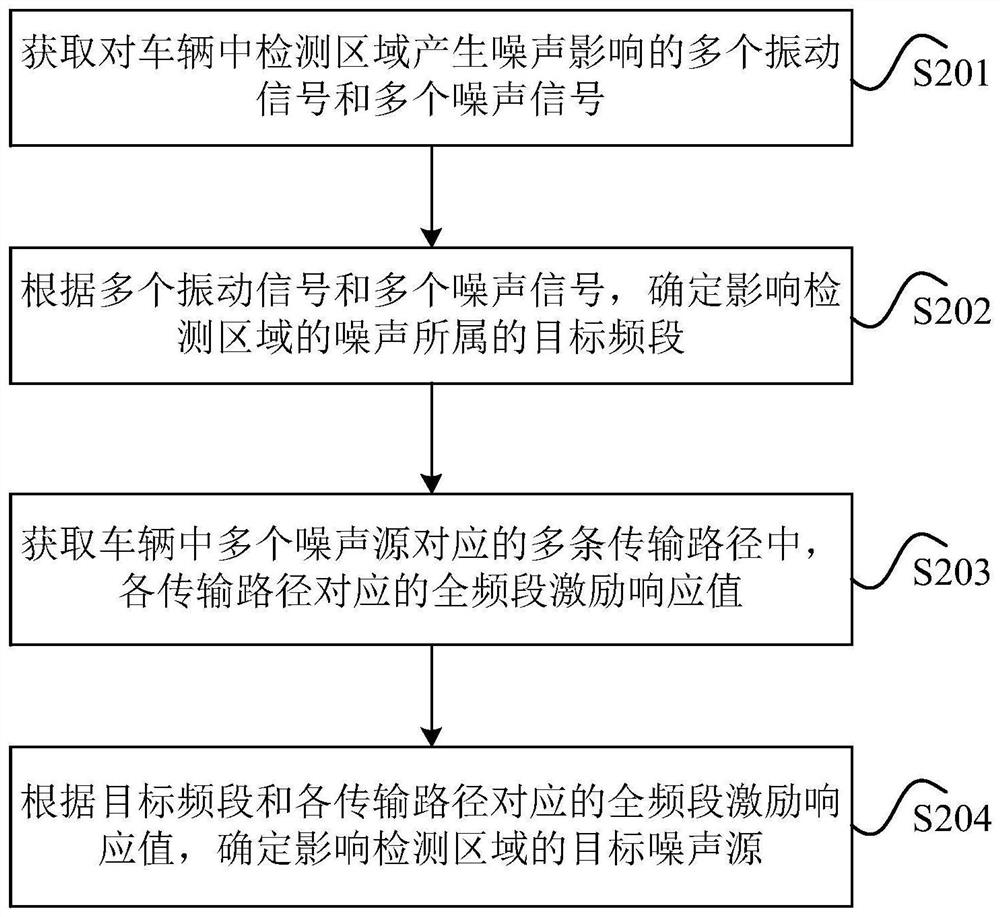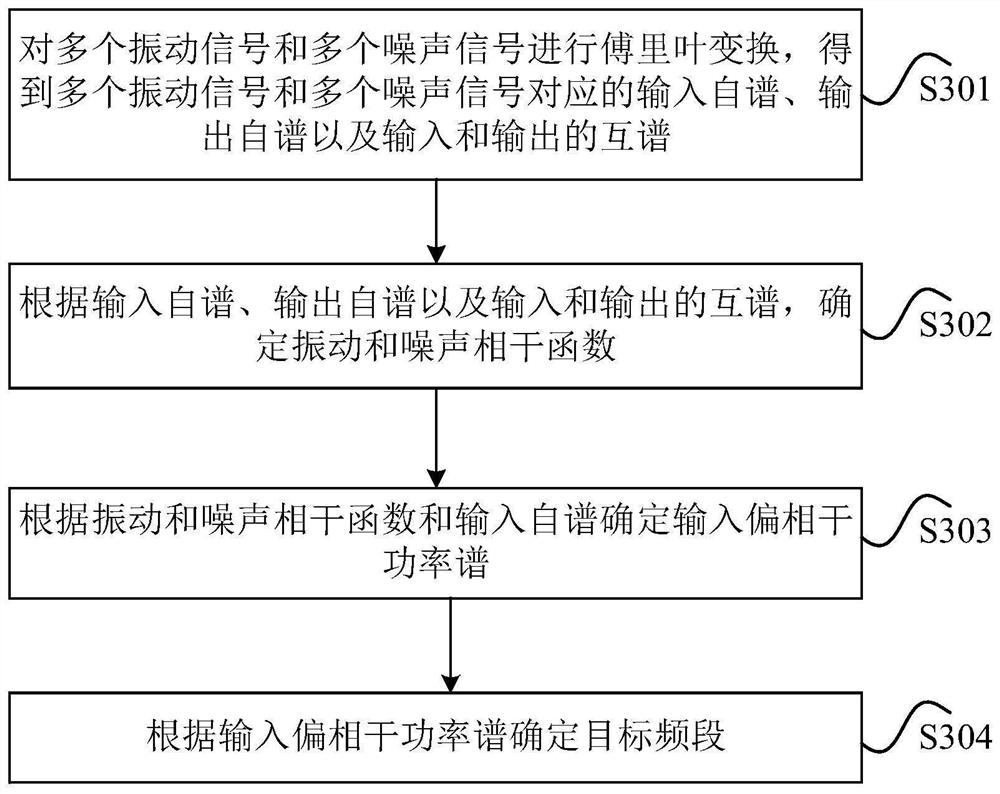Noise source determination method and device
A method for determining a noise source, which is applied in measurement devices, character and pattern recognition, and pattern recognition in signals, etc., to achieve the effect of improving accuracy and solving missed or misjudged target noise sources.
- Summary
- Abstract
- Description
- Claims
- Application Information
AI Technical Summary
Problems solved by technology
Method used
Image
Examples
Embodiment 1
[0061] figure 2 It is a schematic flowchart of a method for determining a noise source provided in an embodiment of the present application. The method for determining a noise source may be executed by software and / or hardware devices, for example, the hardware device may be a terminal or a server. For example, see figure 2 As shown, the determination method of the noise source may include:
[0062] S201. Acquire a plurality of vibration signals and a plurality of noise signals that have noise effects on a detection area in a vehicle.
[0063] For example, when acquiring multiple vibration signals that have noise effects on the detection area in the vehicle, an acceleration sensor may be disposed in the detection area, and the multiple vibration signals that have noise effects on the detection area may be collected by the acceleration sensor. When acquiring multiple noise signals that have noise effects on the detection area in the vehicle, a microphone may be provided in ...
Embodiment 2
[0091] image 3 It is a schematic flowchart of determining the target frequency band to which the noise affecting the detection area belongs according to the embodiment of the present application. The method for determining the target frequency band to which the noise affecting the detection area belongs can also be executed by software and / or hardware devices. For example, see image 3 As shown, the method for determining the target frequency band to which the noise affecting the detection area belongs may include:
[0092] S301. Perform Fourier transform on multiple vibration signals and multiple noise signals to obtain an input auto-spectrum, an output auto-spectrum, and an input-output cross-spectrum corresponding to the multiple vibration signals and the multiple noise signals.
[0093] Among them, the input auto-spectrum is the input auto-power spectrum, the output auto-spectrum is the output auto-power spectrum, and the cross-spectrum of input and output is the cross-p...
Embodiment 3
[0109] As an example, in a possible implementation manner, it may be verified whether the determination result is correct by removing corresponding components. For example, if the target noise source is determined to be one of the wheels of the vehicle through the methods described in the above embodiments, the wheel may be disassembled. Noise detection is performed on the vehicle after the wheel is removed by the method described in the above embodiment, and if there is no corresponding transmission path in the original target frequency band, the wheel is determined to be the target noise source.
[0110] In another possible implementation manner, it may be verified whether the determination result is accurate by replacing corresponding components. For example, if the target noise source is determined to be two transmission shafts of the vehicle through the method described in the above embodiment, the transmission shaft of the target noise source may be replaced with two tra...
PUM
 Login to View More
Login to View More Abstract
Description
Claims
Application Information
 Login to View More
Login to View More - R&D
- Intellectual Property
- Life Sciences
- Materials
- Tech Scout
- Unparalleled Data Quality
- Higher Quality Content
- 60% Fewer Hallucinations
Browse by: Latest US Patents, China's latest patents, Technical Efficacy Thesaurus, Application Domain, Technology Topic, Popular Technical Reports.
© 2025 PatSnap. All rights reserved.Legal|Privacy policy|Modern Slavery Act Transparency Statement|Sitemap|About US| Contact US: help@patsnap.com



